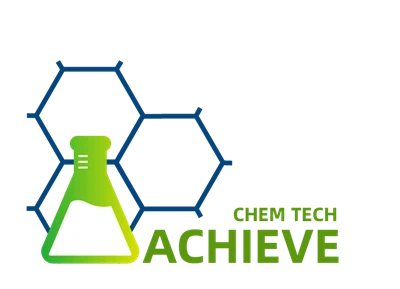What Are The Ideal Stirring Speeds For Different Types Of Reactions in A 20L Glass Reactor?
Jun 20, 2024
Leave a message
Factors Influencing Stirring Speed Selection

Before delving into specific stirring speeds for different reactions, it is essential to understand the factors that influence these choices.
The viscosity of the reaction mixture, the nature of the reactants and products, and the desired rate of mixing all impact the optimal stirring speed in a 20L glass reactor.
Additionally, the vessel geometry and impeller design contribute significantly to determining the effective stirring speed required for efficient mixing and heat transfer.
Ideal Stirring Speeds for Common Reactions
Polymerization Reactions
Polymerization reactions often require moderate to high stirring speeds to ensure uniform mixing of monomers and initiators. For instance, in the synthesis of polyethylene glycol (PEG) derivatives, stirring speeds between 200-600 rpm are typically recommended. This range promotes adequate dispersion of reagents while minimizing the formation of agglomerates, crucial for achieving desired molecular weights and polymer structures.
Esterification Processes
Esterification reactions, involving the condensation of acids and alcohols, benefit from lower to moderate stirring speeds (100-300 rpm). These speeds facilitate the interaction between the reactants without excessively promoting side reactions or heat buildup. Maintaining optimal temperatures and controlling the residence time of intermediates are also critical considerations in achieving high yields of ester products.
Oxidation and Reduction Reactions
Oxidation and reduction reactions, such as those involving catalytic hydrogenation or oxidation of organic compounds, typically require precise control of stirring speeds. Depending on the specific catalyst and reactant concentrations, stirring speeds can vary widely. However, a range of 150-400 rpm is commonly recommended to ensure efficient mass transfer and maintain homogeneous reaction conditions throughout the process in a 20L glass reactor.
Impact of Stirring Speed on Reaction Kinetics
The kinetics of chemical reactions are significantly influenced by stirring speed. Higher speeds generally enhance mass transfer rates by promoting efficient mixing and reducing concentration gradients within the reactor. However, excessive agitation in a 20L glass reactor can lead to shearing of sensitive molecules or generate undesirable foam in certain reactions. Therefore, achieving the optimal balance between mixing intensity and reaction stability is crucial for maximizing yields and product purity.
Experimental Techniques for Determining Optimal Stirring Speed
Determining the ideal stirring speed often involves initial experimentation and optimization studies in a 20L glass reactor. Techniques such as torque measurements, power input calculations, and visual inspection of mixing patterns are employed to assess the adequacy of stirring conditions. Furthermore, computational fluid dynamics (CFD) simulations provide valuable insights into flow patterns and turbulence levels within the reactor, aiding in the selection of optimal operational parameters.
Practical Considerations and Safety Precautions
Practical Considerations
1.Maintenance and Calibration: Regular maintenance and calibration of the stirring apparatus are essential for consistent performance. This includes checking for wear and tear on seals, bearings, and impellers.
2.Impeller Selection: Choosing the appropriate impeller design for the specific reaction type ensures optimal mixing. Impellers should match the viscosity and nature of the reactants.
3.Temperature Control: Accurate temperature control is critical. Utilize proper heating and cooling systems to maintain reaction temperatures within desired ranges, avoiding thermal gradients.
4.Monitoring Systems: Implement monitoring systems for real-time tracking of reaction parameters such as temperature, pressure, and pH.
5.Avoiding Shear and Foaming: Excessive stirring speeds can lead to shear-sensitive reactions or generate unwanted foam, which compromises product quality and reactor safety. It is essential to strike a balance between achieving adequate mixing and minimizing shear-induced degradation or foam formation, especially in sensitive reactions such as biochemical processes or emulsion polymerizations.
6.Experimental Validation and Optimization: Determining the ideal stirring speed often involves experimental validation and optimization. Techniques such as torque measurements, power input calculations, and visual inspection of mixing patterns are employed to assess the adequacy of stirring conditions. Computational fluid dynamics (CFD) simulations can also provide insights into flow patterns and turbulence levels, guiding the selection of optimal operational parameters.
Safety Precautions
1.Chemical Compatibility: Ensure all reactor materials and components are compatible with the chemicals used to prevent reactions that could compromise reactor integrity.
2.Pressure Relief Mechanisms: Install pressure relief valves to manage overpressure situations and prevent reactor failure.
3.Inert Atmospheres: Use inert atmospheres (e.g., nitrogen or argon) when handling reactive or volatile substances to reduce the risk of explosions or fires.
4.Ventilation: Proper ventilation is necessary to manage fumes and prevent the buildup of hazardous gases within the laboratory environment.
5.Personal Protective Equipment (PPE): Operators should wear appropriate PPE, including gloves, goggles, and lab coats, to protect against chemical exposure.
6.Emergency Protocols: Establish and train staff on emergency procedures for handling spills, leaks, and other unexpected incidents.
7.Manufacturer Guidelines: Adhere to manufacturer guidelines regarding operational limits, such as maximum stirring speed and torque, to avoid mechanical failure.
Conclusion
In conclusion, the choice of stirring speed in a 20L glass reactor significantly impacts the efficiency and success of various chemical reactions conducted in small-scale laboratory environments.
By understanding the specific requirements of each reaction type and optimizing stirring parameters accordingly, researchers can enhance product yields, improve reaction reproducibility, and advance the overall efficacy of experimental processes.
Continuous exploration of innovative techniques and adherence to established best practices will undoubtedly contribute to further advancements in chemical synthesis and process optimization.

